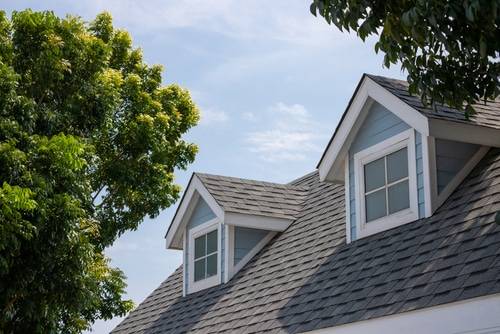Regularly inspecting your roof can protect you and your loved ones from damage caused by storms, precipitation, and other weather-related concerns. Considering that a new roof can endure for at least 20 years, it is prudent to replace your roof when it begins to show symptoms of wear and tear.
Keep an eye out for any indications of a potential problem; if you notice them, contact an expert and get repairs performed immediately.
Six Indications You Need a New Roof
The condition of your roof can indicate when it should be replaced. Knowing what to look for can assist you in identifying the issue and making an informed decision about whether to repair or replace it.
1. A Leaking Roof
Excessive roof leaks can cause significant property damage. Roof leaks are not only expensive to repair, but they can also contribute to the growth of mold and mildew, making your home unpleasant and unhygienic.
A professional examination can assist you in determining whether your roof requires any repairs. By scheduling an early assessment, you can prevent wasting and destroying costly labor and supplies. There are numerous methods for repairing leaks, such as sealing and caulking around window and door frames.
2. Sagging Roof
A sagging, drooping roof indicates moisture and decomposition, and those who disregard these signs will later regret it. Changes in color and other surface imperfections, in addition to tears at the lowest spots, can indicate a sagging roof.
A skilled specialist can determine the presence of wood rot and indicate the areas of your home that require repair. Look for any indicators of moisture that show trapped moisture under the shingles or that rainwater can collect there. It may be time to replace your roof if there are noticeable leaks.
3. Shingles With Curls
Roofing shingles might eventually sag, bend, and fail. They’re waterproofed and operate as a barrier between the rain and your property, but these characteristics make them more susceptible to damage than other roof types. Curling or buckling shingles may indicate that they aren’t firmly affixed to the roof. Poor installation or unfavorable weather conditions, such as hail and heavy storms, might create these issues.
4. Roof Damage
Any neglected structure is susceptible to developing a rotting roof. It results from insufficient drainage or a construction composed of soft materials. When water from rain or snow melts and seeps into the materials, moisture develops and causes rot in the wooden structure supporting the roof.
If you have a lot of snow or rain, your roofs may be susceptible to fungus deterioration. This is a significant issue since it can result in water leaks, mold, and mildew growth.
5. Missing Roofs
Checking for cracks or missing shingles is one of the simplest ways to detect a problem with a roof. If the supporting structure is damaged or missing, this is an instant warning sign of a possible problem.
For your roof to be structurally stable, it must be supported by the proper material and installed correctly. Internal support is essential for the deflection and stability of a roof, so any cracks or missing support structures must be evaluated and rectified quickly.
6. Roof Insulation Deficient
The cost of heating and cooling a home is sometimes the highest expense. This is especially true if your roof has inadequate insulation. During the colder months, your roof can easily allow cool air and heat. A well-insulated top can keep warm air inside while retaining cool air outside, ensuring your home is comfortable throughout the year and reducing energy expenditures.
How Frequently Should Roofs be Replaced?
A roof’s lifespan can be defined in years, but it is crucial to consider the expense of repairing a damaged roof. Most people are uninformed of the lifespan of their tops and assume that replacement is a routine part of the process.
It is advised to replace a roof every 20 to 25 years based on historical average construction expenses, which is the average life span of a roof. Maintain proper ventilation throughout the year and do any necessary maintenance to extend the life of your roof.
When is the Ideal Time to Replace a Roof?
It is contingent upon the sort of roof you have, your location, and the age of your roof. The most significant time to replace a roof is when it shows symptoms of age or damage. Rust thrives on old metal roofs, which increases the expense of upkeep and repair.
By reflecting sunlight off the roof and into the attic instead of absorbing it, new metal roofs extend the roof’s life and cut energy expenses over time. The key to avoiding excessive spending is determining whether your roof requires replacement before observing any indicators.
Which Roofing Materials are the Most Effective?
There are numerous options available when selecting the best roofing materials. The most crucial factor to consider is the material’s resistance to the elements and its ability to repel water. Superior to the average asphalt shingle in terms of quality and durability.
Nonetheless, it will endure longer and provide enhanced weather protection for your property. The materials should also be light and durable. When selecting a roofing material, it is essential to consider its weight. When examining the durability of the material you are evaluating, it is helpful to evaluate the construction process.
Conclusion
It is crucial to safeguard your roof so you can enjoy it for years to come, as it is an essential feature of your home. You can help manage your roof and prevent damage from occurring by performing routine inspections and installing new materials that won’t affect the roof’s lifespan.
Big Bear Roofing provides roofing services and materials that you may require. These professionals can repair or replace your roof with higher-quality materials, extending its lifespan.
—

